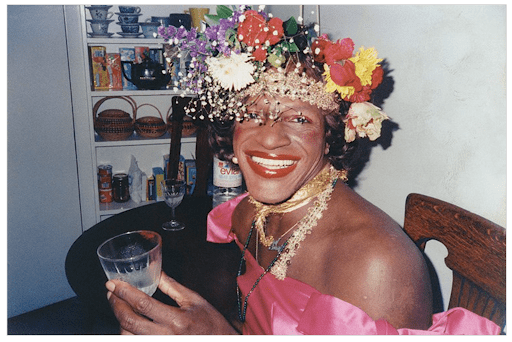30th June 2022
Photo credit: Vans/Pride Americas
Every June, you may notice that your social media feeds are awash with all the colours of the rainbow… literally. It’s Pride Month – the perfect time for brands to pin an eye-catching flag to the mast of their allyship.
Or is it?

Meg Stalter – the unofficial official queen of Pride Month. See something amazing here
‘This is a good thing!’ you might say, ‘after all, there was a time that global brands would NEVER have shown this sort of support for the LGBTQIA+ community.’ And you’d be right. As recently as the late 80s in the UK, a law was brought in to ban ‘’the promotion of homosexuality” by local authorities. Known as Section 28, this legislation was only repealed in 2003.
But while it’s a WONDERFUL thing to have this community bolstering from huge brands, it becomes problematic when any movement is co-opted for what seems like monetary gain, with no clear tangible benefits to the community it promises allyship to.
Rainbow-washing, pink-washing or – even more directly – rainbow capitalism, is the annual act of commodifying Pride and selling ‘queerness’ back to the community itself through apparel, goods, experiences and a general mood of ‘slay, slay, slay, all the live long day’.
Yes, Pride is fun. Yes, it’s fabulous, and yes, it’s celebratory. But much of the annual brand messaging ignores the other – slightly-less-commercially-appealing-due-to-the-lack-of-glitter – facts about Pride.
It’s not just a party – it’s a protest against the fact that progress has not moved at the same pace everywhere, and for many LGBTQIA+ people the world over, the fight continues.
(Stats from Stonewall)
This is certainly not meant to dampen the celebratory buzz, but to spotlight the other aspect of Pride – a movement that understands that until all people are free, nobody is.
Inspired by the events at Stonewall in June 1969 (when a police raid on a gay bar in New York provoked an uprising that would go on to ignite a global call for change), Pride’s outward appearance may have evolved in recent years, but the intention at the heart of it remains the same.

Marsha P Johnson – transgender pioneer, activist and key member of the Stonewall Uprising.
Of course, it’s an incredibly nuanced topic and whilst we’d never profess to be the last word on it, we want to open up a dialogue about how the marketing messaging surrounding Pride could and should matter – particularly in a time when people demand, and deserve, authentic allyship and genuine sustained support. One glance at the hashtag #performativeally makes it clear they won’t settle for anything less.
Social media in particular has been a welcoming and inclusive space for many. Recognition can mean a lot to people and the kind of high-profile allyship that brands provide can be hugely powerful. Without being cynical, it’s actually also very important for brand growth to bring meaning and purpose into your messaging.
Not all Pride month marketing is rainbow washing, but equally, not all Pride month marketing is allyship. So if it’s going to be done at all, it needs to be done right. And if it’s done right, everyone wins.

Not the Pride vibe you’re looking for
When considering your marketing strategy for Pride or any other form of allyship, it’s good to ask yourself some questions:
Why?
Basically, clean out your house before stepping into a topic of this magnitude because if there are murky skeletons in your closet, they will be rooted out.
How?
This time of year presents you with a huger-than-huge opportunity to ally with meaning, to make real human connections beyond the usual messaging and even to spotlight the real faces behind your brand. No, this campaign will not be traditional marketing and neither should it be. However, there is no reason the end benefits can’t be the same.
When?
You may wonder why we waited until the end of Pride Month to share our thoughts on the subject…

Vans celebrated Pride 2021 in style with their LGBTQI+ artist collaborations
So, to circle back to the question of whether marketing matters during Pride month, our answer would be ‘absolutely’.
Marketing can matter in many big conversations. All good marketing should tell a story, and when it comes to the stories of not just this beautiful, diverse, vibrant community, but many others too, they were silenced for too long. Marketing, when done right, can and should give a platform to the more marginalised voices in our communities.
We believe there can be a place for brands in this dialogue. Just always keep in mind that, in the words of Adweek’s Rigel Cable, you ‘need to show up for the fight, not just the party’.
Let’s try and always do work we can be proud of.
Resources:
For interesting statistics relating to Big Data & Pride Month, check out this piece from Quilt.AI.
Sign up for your dose of creative inspiration.
What services are you looking for?
Please select a service
Strategy & planning
Website
Marketing
Technology solutions
Branding
CRM
Other
Tell us about your project and what you want from us, this will help us prepare for our call.
What’s your budget?
Please select a budget
Less than £10k
£10-£40k
£40k +
Your Information
Business Type
Location
Please select your location
UK
USA
Europe
Global
How did you hear about Ignite?
I've worked with you previously
Found you online
Recommended by Ignite client or collaborator
Saw an Ignite advert or social
Through Clutch
Other
Tick the box to receive insight, opinion and inspiration from Ignite Spunta la casella per ricevere la newsletter
Please note that by submitting this form you agree to us storing your contact details and contacting you in regard to your query. Our privacy policy is available on our website with full details on our commitment to protecting personal data.
We'll be in touch soon!
Your Information
Tick here if you'd like to receive insight, opinion and inspiration from Ignite Please tick to receive newsletters


Ignite have joined forces with Screen Pilot to form the world's leading marketing agency for the hospitality, travel and leisure markets.
Same team. Same world-class results. Now with more firepower - and the data to back it up.
Head over to our new site to see what’s next. Or call us on 020 7697 0151 to discuss your project.